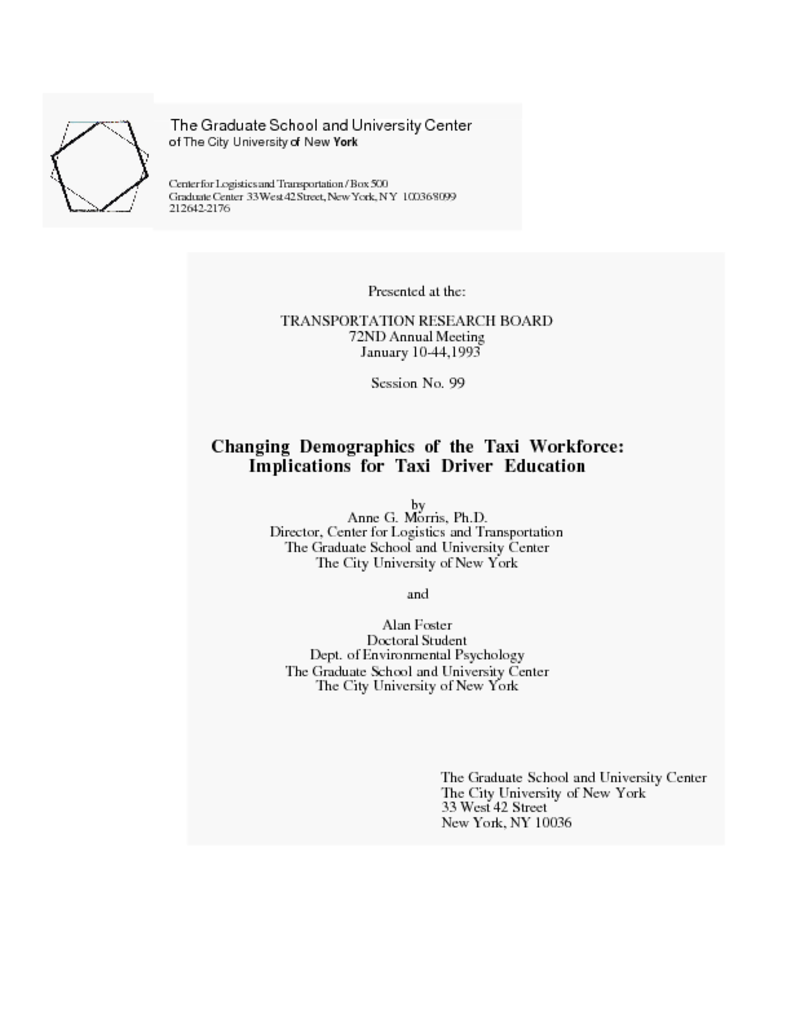In 1984, 74% of the incoming drivers entering the workforce of the New York City taxi industry were immigrants born outside of the U.S. with the greatest numbers, in ascending order, coming from Haiti, the Dominican Republic, Egypt, Korea, the Soviet Union and Pakistan. In 1988 the survey of students entering the New York City Taxi Driver Institute (NYCTDI) was replicated. It revealed that the immigrant population had increased to 86% with significant numbers still coming from Haiti but with an even higher percentage entering from the countries of the Indian sub-continent. Administrators at both sites of the NYCTDI utilized findings about students' birthplaces and languages to restructure the training sections on driver-passenger relations. The data was used to address cultural differences that could interfere with providing an acceptable level of passenger service. The immigrant population has increased markedly in the taxi workforce in urban areas throughout the U.S. necessitating language screening tests as well as longer driver training programs. In New York City the training program was lengthened from 20 to 40 hours. The challenge of preparing new immigrants to meet the demands of passengers in a complex urban area is enormous. An updated survey of the demographics of the incoming taxi workforce in New York City was carried out over a six month period starting in February, 1992. Basic demographic data collected included place of birth, languages spoken, length of time in the Metropolitan area, level of education and previous work experience. Current and previous requirements for taxi driver training programs are discussed including program length and content as well as the recently instituted language screening test.




